Masks
A mask completely or partially covers its user’s face. There are masks for many different purposes and uses. The oldest preserved masks are about 9,000 years old, but based on rock art paintings, masks were worn even before that. Masks can be used for ritual purposes, for entertainment or to remain unidentified. Masks are often also used as protective equipment. In 2020, protective masks became commonplace for many people.
The use of a mask is often associated with a specific event, ceremony or celebration. For example, there are theatre masks, dance masks and death masks. Masks reflect emotional states and emphasise facial gestures. Sometimes masks have been used to heal and other times to mediate supernatural forces. Various masks have been worn in almost all cultures in the world.
Select an image for more information
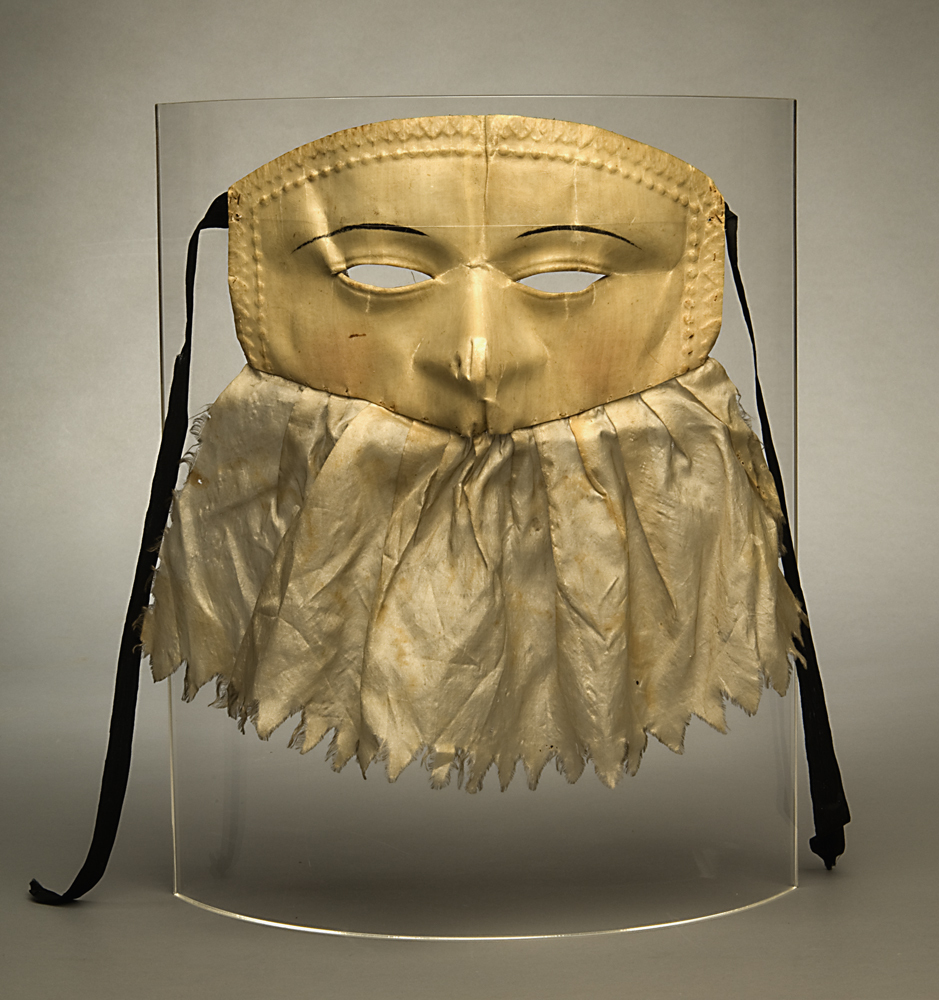
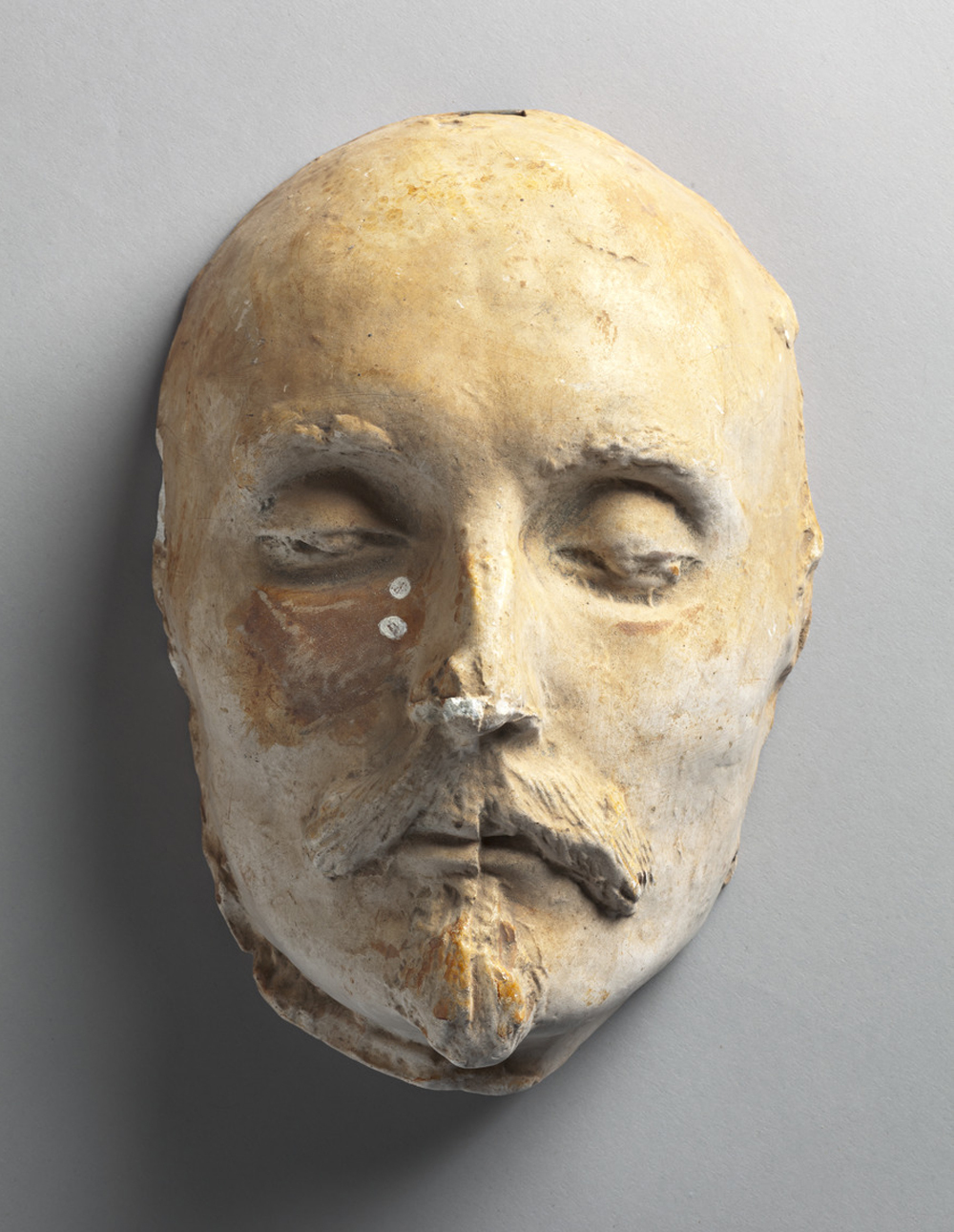
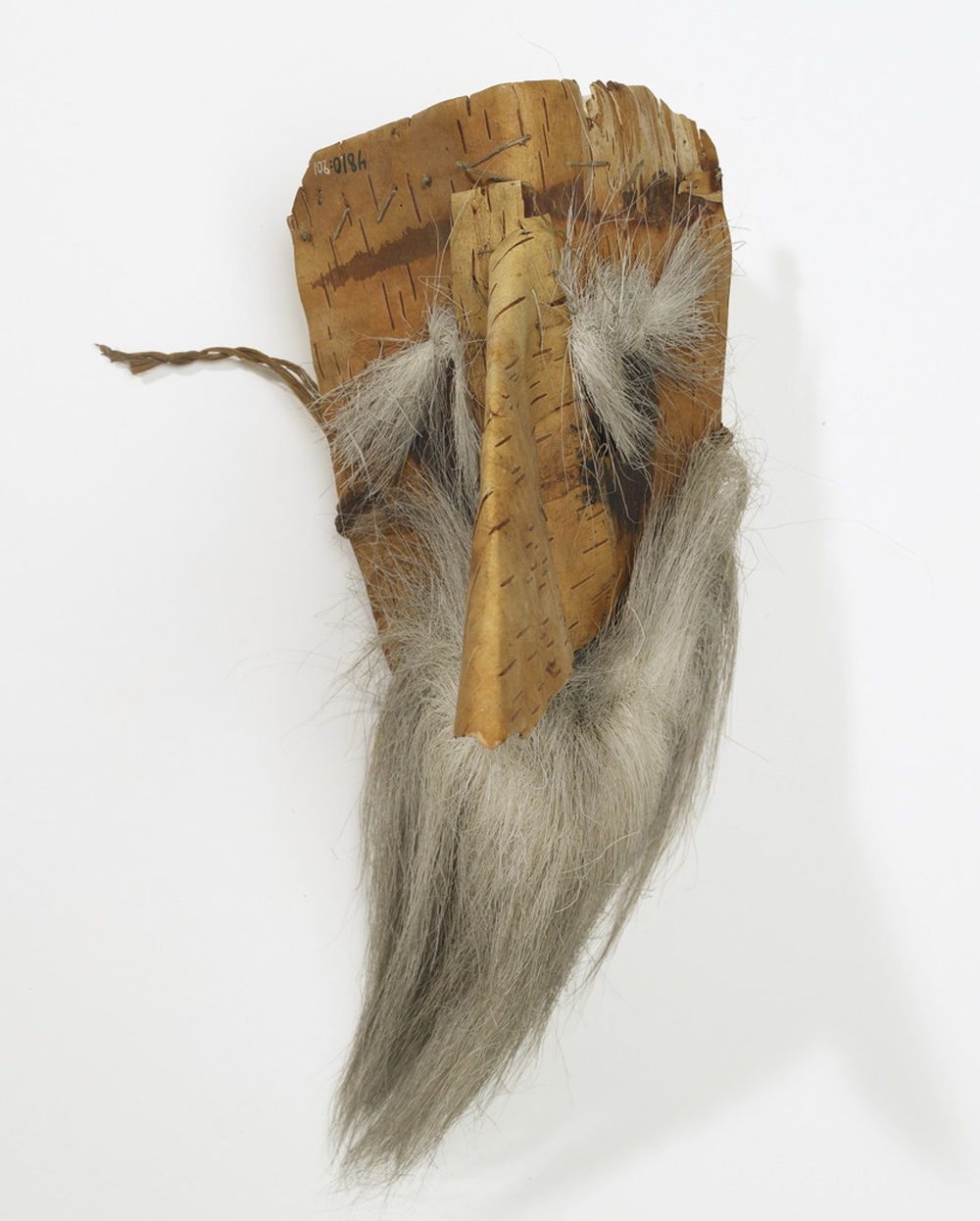
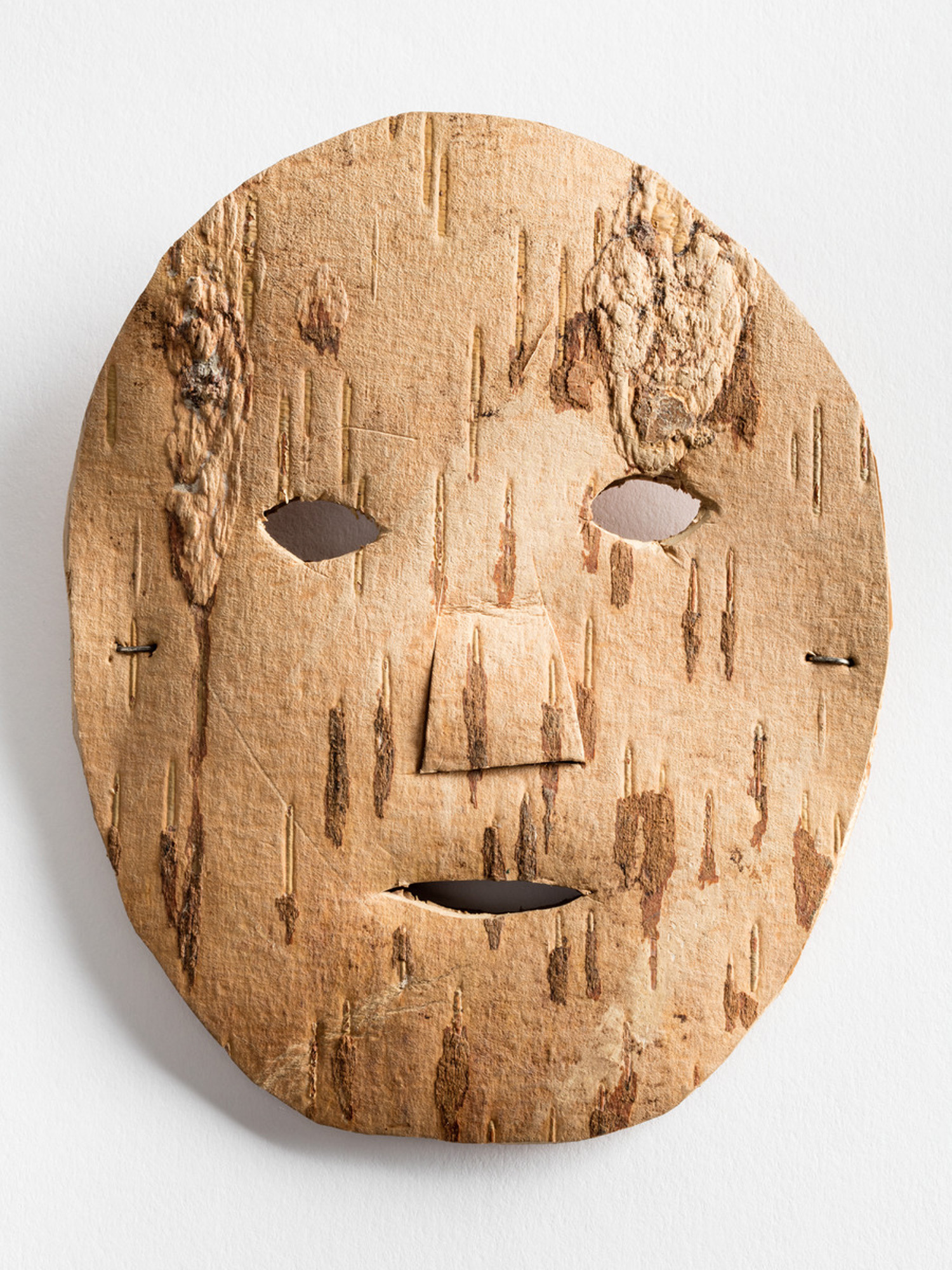
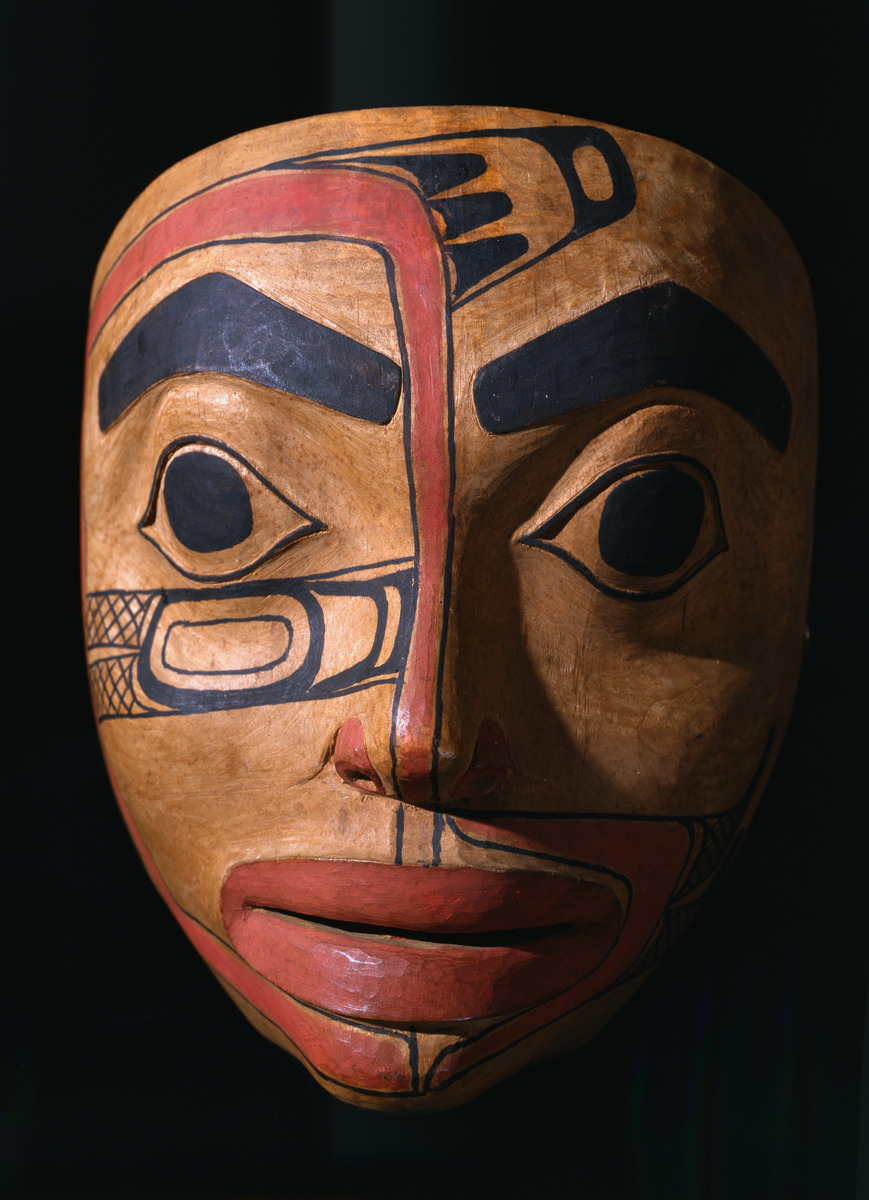
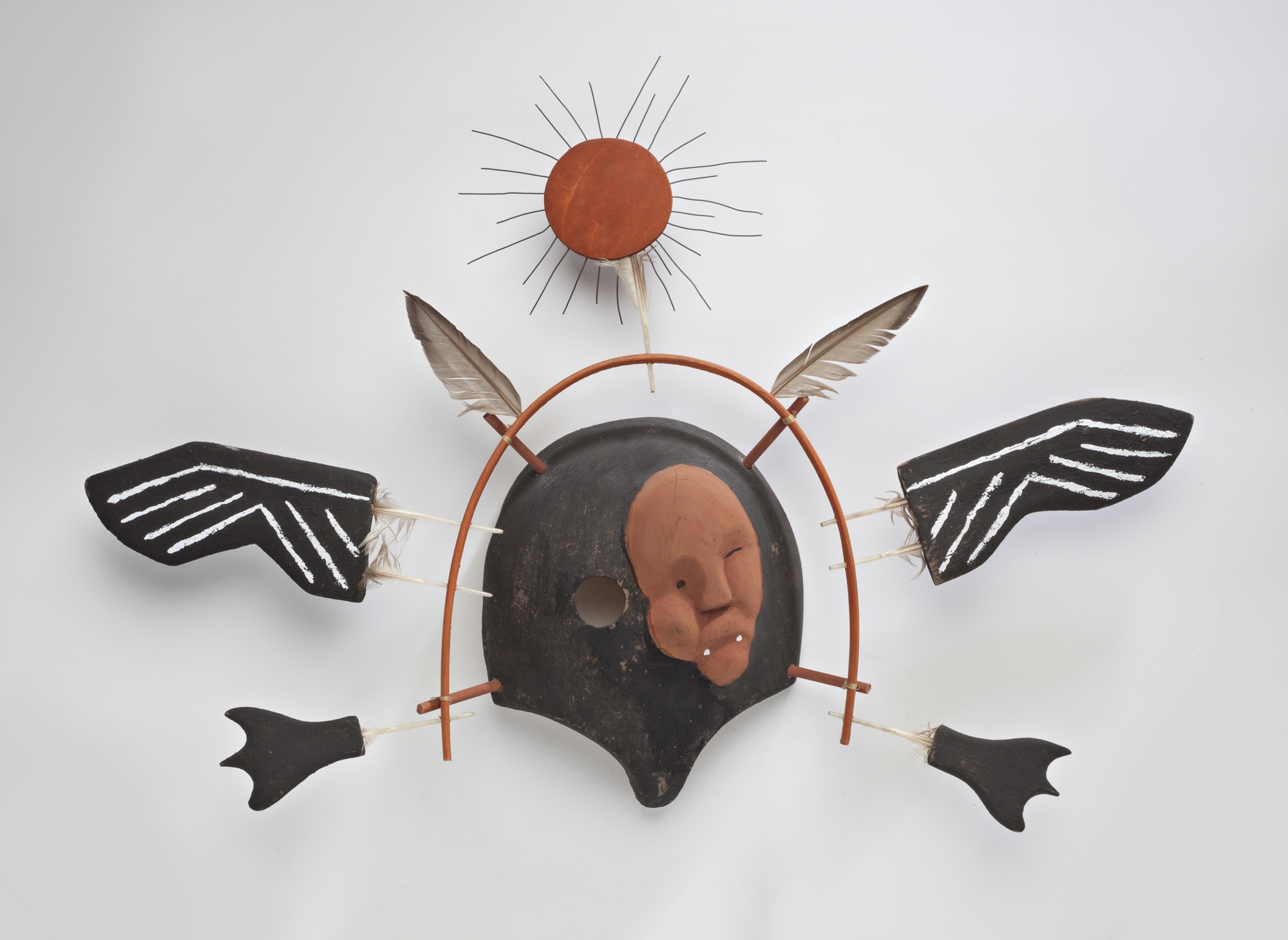
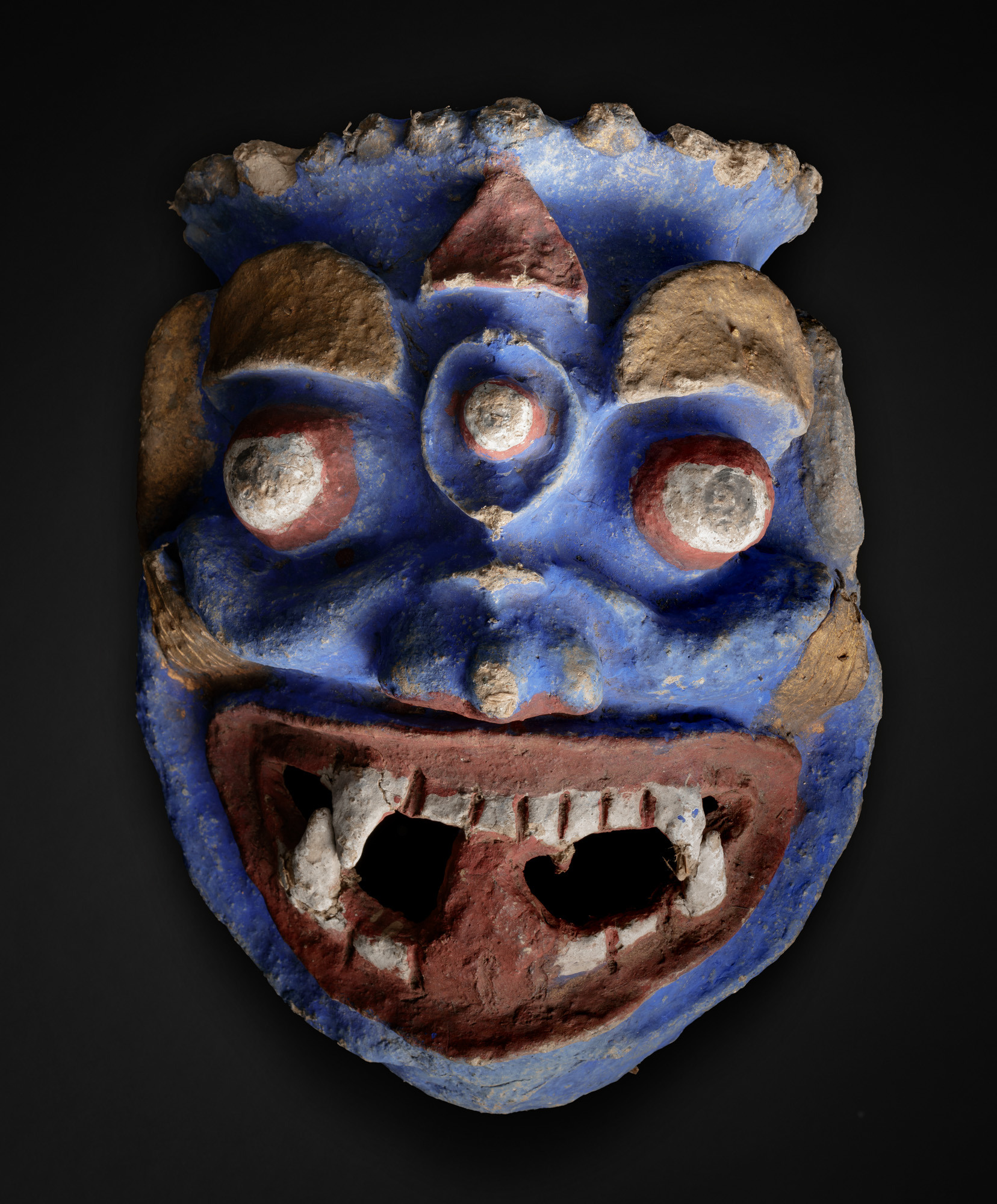
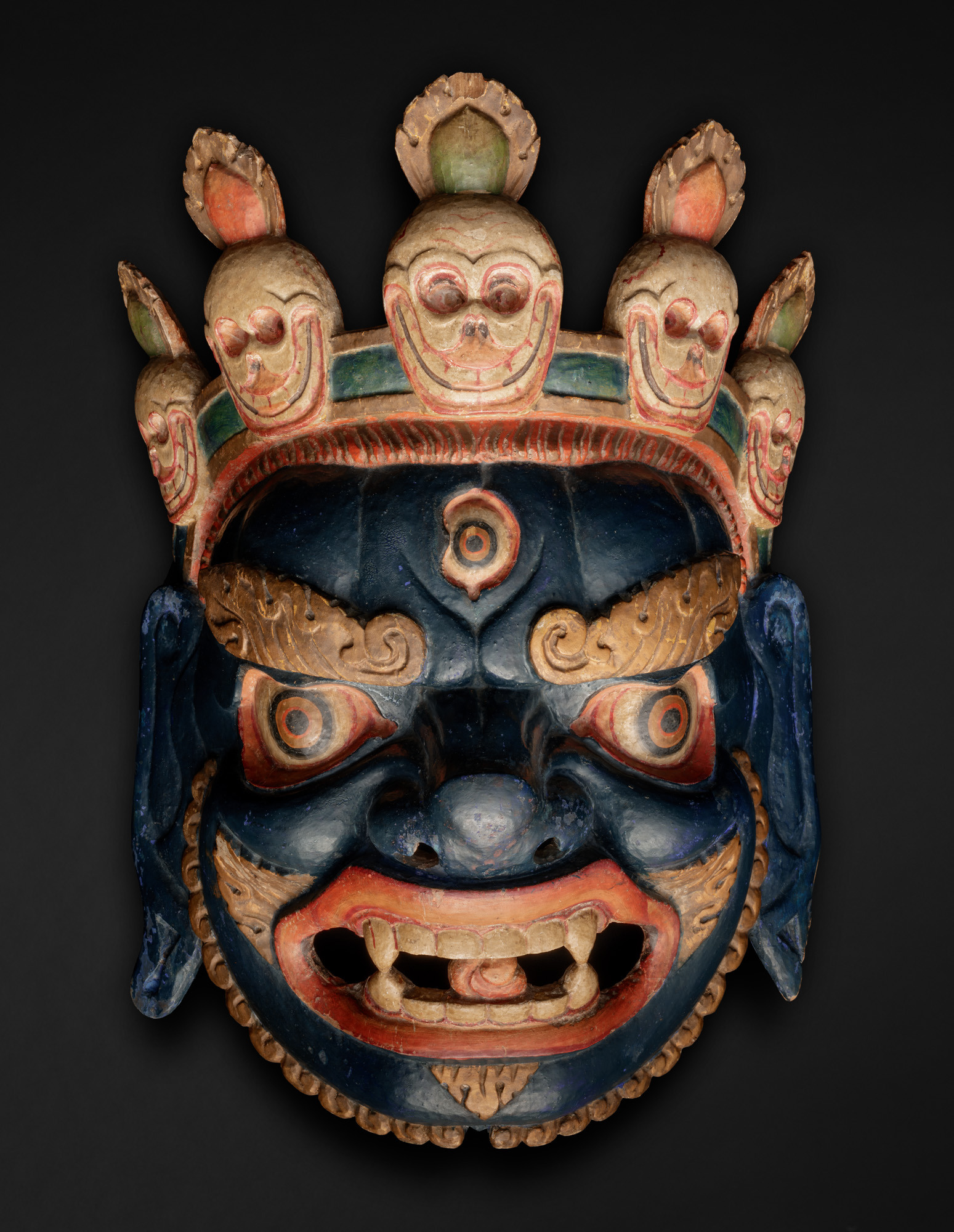
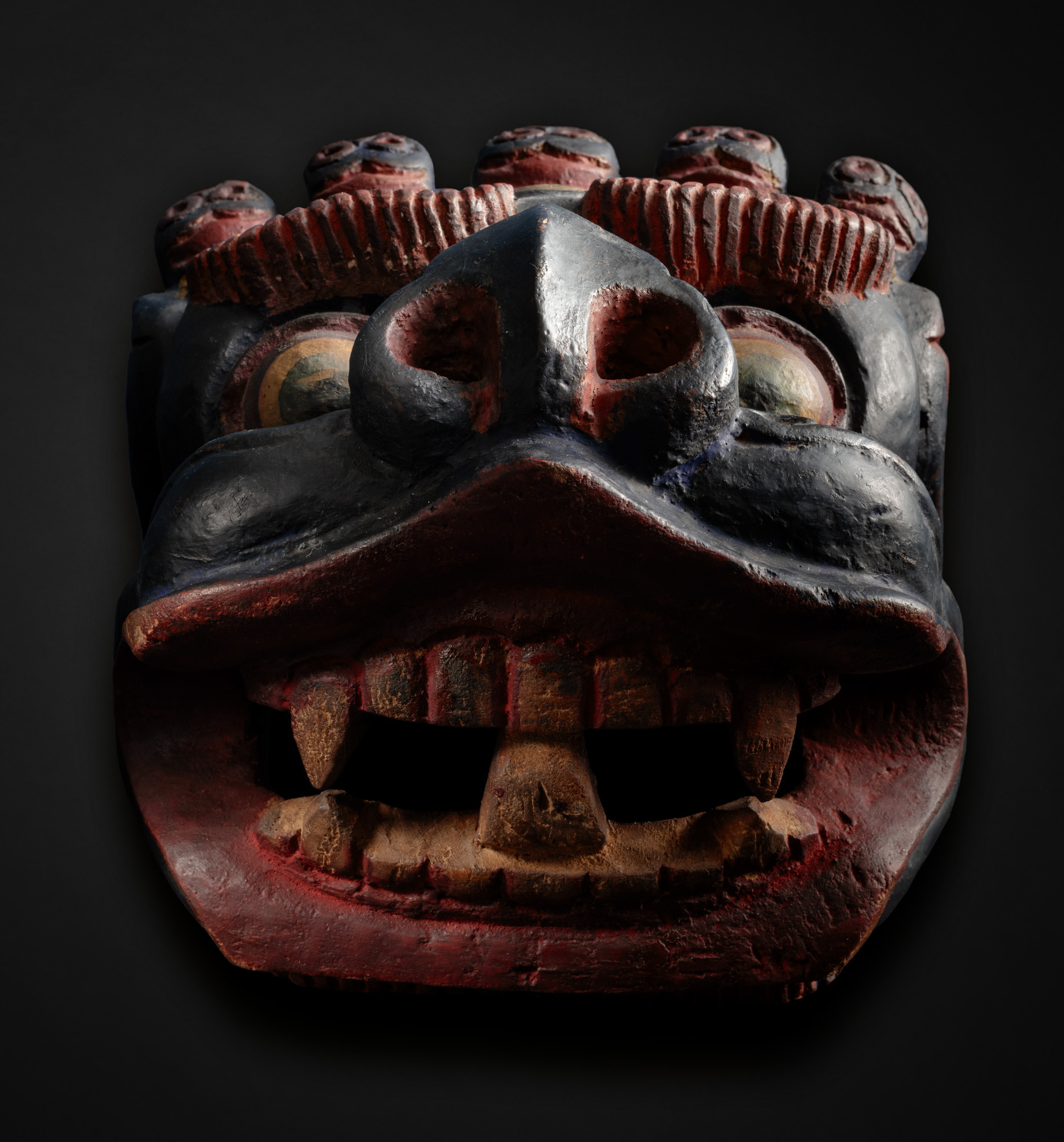
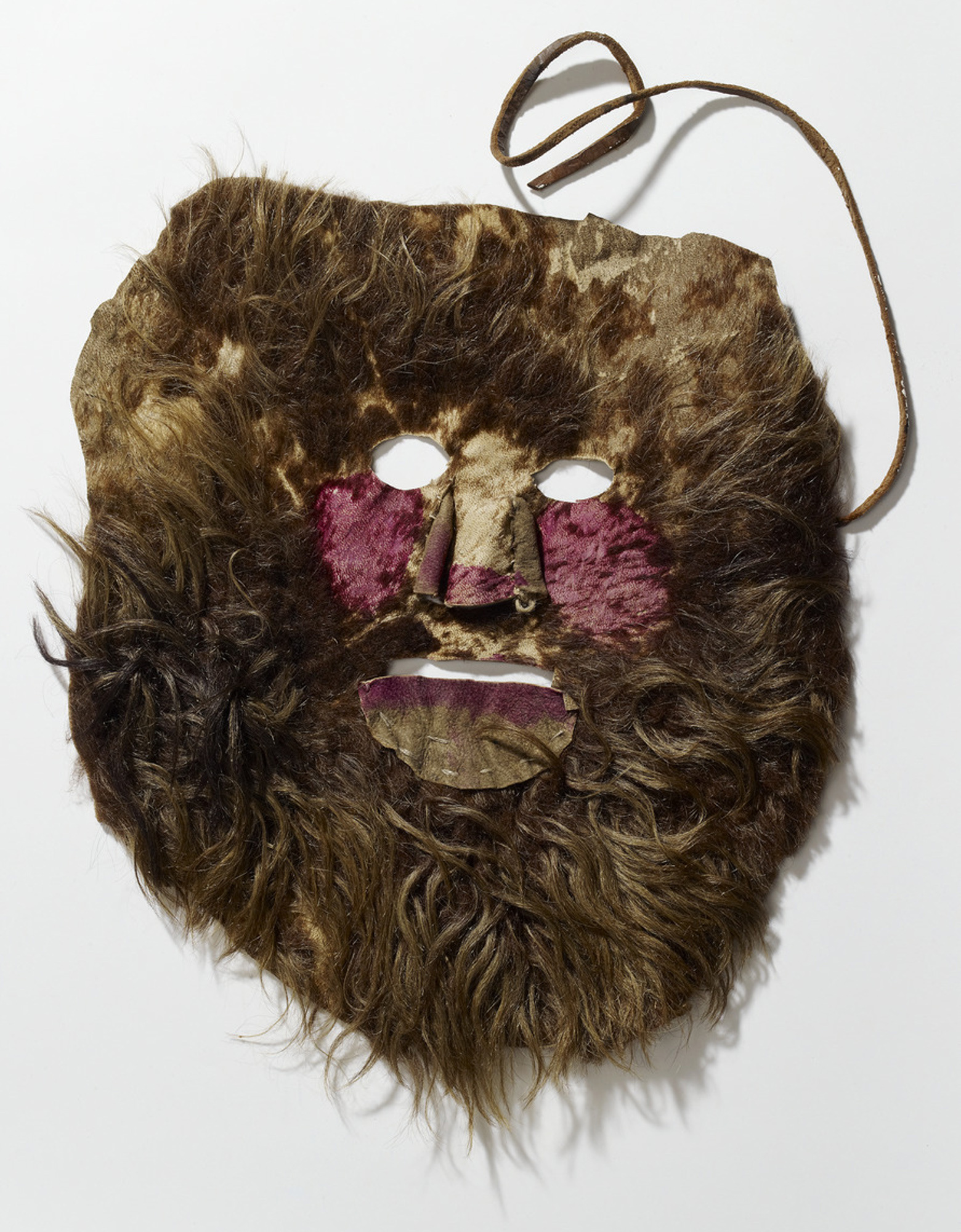
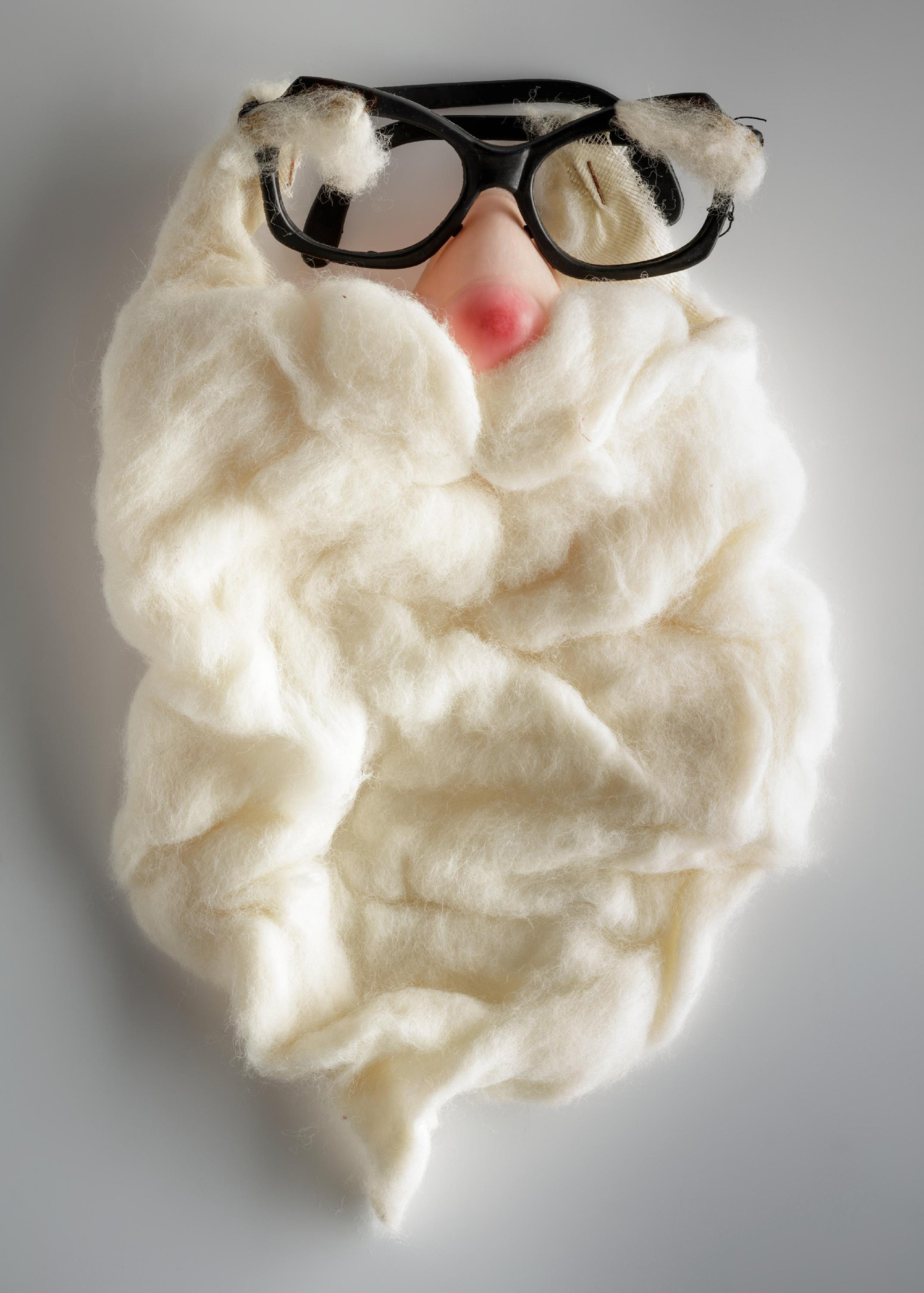
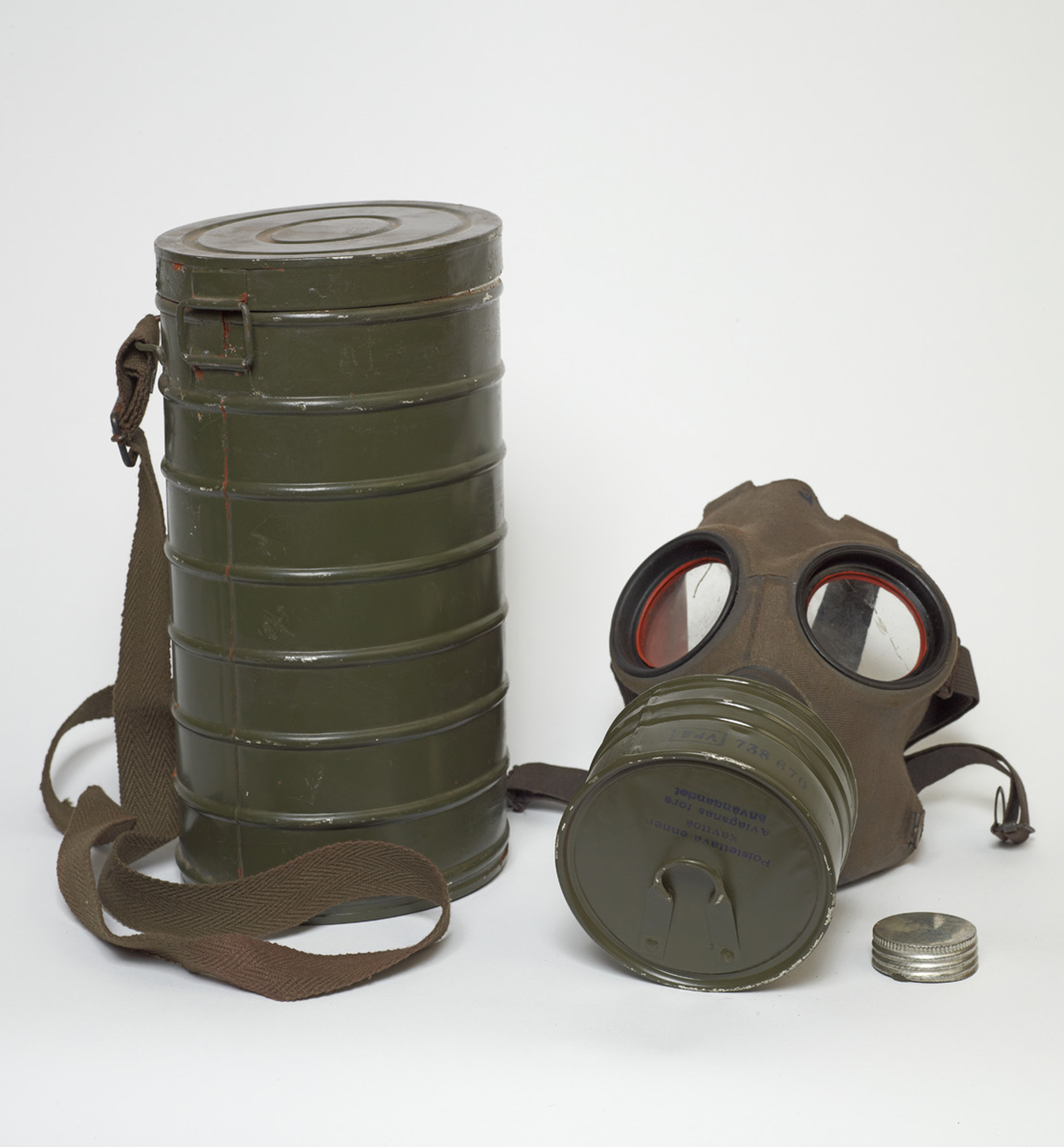

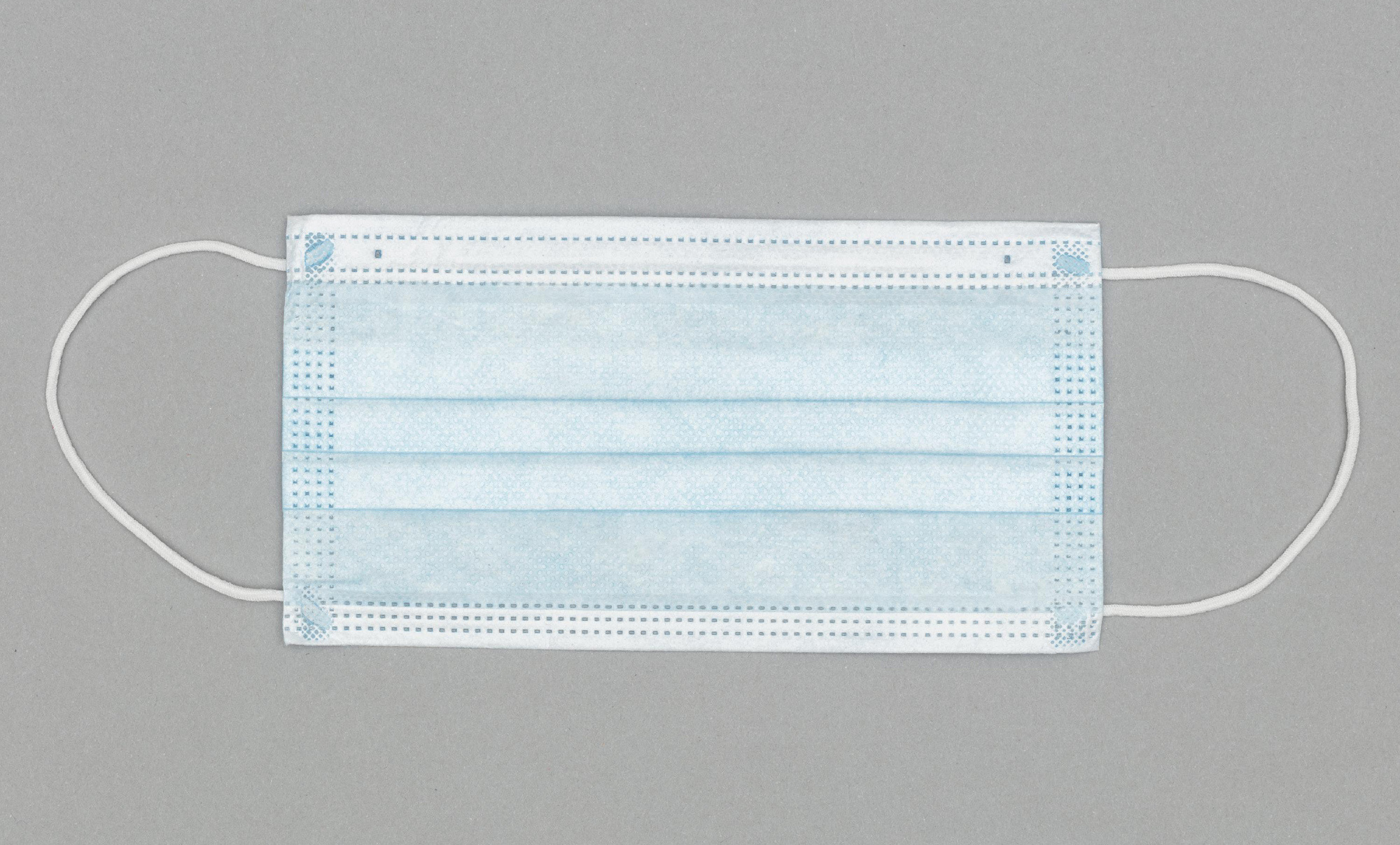
Costume party mask
Death mask
Birch bark mask
Fish god
Tlingit mask
Spirit of the Raven
"Devil mask" from the Himalayas
Ritual mask from Tibet
Dance mask from Tibet
Saint Knut’s Day mask
Santa Claus mask
Gas mask
Donald Trump mask
Face mask

Costume party mask
A note has been affixed to the top of the mask indicating that it was worn at a costume party in Stockholm in 1792, when Gustav III was fatally wounded. The previous owner of the mask was the merchant John Lindman.
A mask with black silk ribbons tied at the back of the head. The top section is made of waxed white fabric (chintz) featuring eyelets, black painted eyebrows and a nose. The bottom section consists of a folded, white silk fabric with a jagged edge.
H98053:1

Digital collection

Death mask
A plaster cast of a man’s face, modelled on the face of William Shakespeare. The eyes are closed and there is a moustache and beard. The mask was made in Germany at the turn of the 19th and 20th centuries, with a stamp on the side that says Deutsche Shakespeare Gesellschaft, Weimar.
H99050:373

Digital collection

Birch bark mask
A birch bark mask from the Sosva Mansi region. A mask made of birch bark, with eyebrows and a beard made of reindeer hair. The nose was made by bending a piece of bark and sewing it onto the mask. Men wore masks like this at a bear hunting feast.
SU4810:201

Digital collection

Fish god
A mask representing the fish god was used as a magical object. Two pieces of birch bark against each other form a two-sided man’s face. The two halves were joined together by two wires tied at their ends. The mask was attached to the end of a pole and placed in a roach spawning location to prevent envy.
K7876
Digital collection

Tlingit mask
A mask from the Tlingit people of the Pacific Northwest Coast of North America. It depicts the features of a female ancestor’s face and the clan’s coat of arms patterns, from which it is possible to deduce, for example, the age, gender and social status of the deceased person. Prestigious women had lip ornaments, labrets; the elderly and influential had the largest ones. Young girls only had a small labret or no lip ornament at all. The open position of the lips suggests talking or singing. The mask dates back to before the 1850s and, therefore, its colours are pigments derived from nature. These masks were worn by both women and men at potlatch celebrations commemorating dead relatives.
VK50
Digital collection

Spirit of the Raven
A mask called the Spirit of the Raven, made by an artist belonging to the Yupik people in Bethel, Western Alaska in 1989. In the Yupik mythology, the raven is the spirit of creation and a culture hero who also created humans. A story was associated with masks used at ceremonies and dances, and the masks were sometimes destroyed after the ritual. Due to the impact of Christian missionary work, the tradition started to die down in the 1890s, but it has begun to recover in the past decades. This mask represents contemporary art.
The raven is portrayed both as a bird and as a spirit with a human face, and thus it sees through both animal and spirit eyes. The closed eye of the spirit is marked with a black line, and its face is decorated with white dots that represent the traditional way of Yupik men to decorate the corners of their mouths with piercings. The spirit of the raven does not have hands here as usual, but wings. The mask also includes the sun, which refers to the story of how, at the beginning of the world, the raven freed the sun from the man who had captured it and then set it in the sky to shine for everyone.
The mask was held in place while dancing by biting on the wooden sticks behind it.
Artist Alexie Isaac, 1989. Bethel, Alaska. VK6478:53. Photo: Rauno Träskelin, 2014.
Digital collection

"Devil mask" from the Himalayas
A mask representing a protector of Buddhist dharma, dharmapala, made of painted clay. This type of mask is related to the Tibetan Buddhist cham dance tradition, but traditionally the cham masks are wooden. The rough mask belongs to the collection of the Evangelical Free Church of Finland and was acquired from Sikkim in 1912. The mask has two labels, with the words “Sikk. devil dance mask” and “Tibetan devil mask”.
Sikkim, Himalaya. VK6494:191. Photo: Ilari Järvinen, 2020.
Digital collection

Ritual mask from Tibet
A dance mask representing a protector of Buddhist dharma, dharmapala (Palden Lhamo?), made of painted wood. The mask is related to the Tibetan Buddhist cham dance tradition. Large and long-lasting cham performances are held in connection with the Monlam Prayer Festival. Monlam is the largest annual religious celebration, and cham performances are usually held in the courtyards of monasteries.
VK6133. Photo: Ilari Järvinen, 2020.
Digital collection

Dance mask from Tibet
A dance mask representing a protector of Buddhist dharma, dharmapala, made of painted wood. The mask is related to the Tibetan Buddhist cham dance tradition. Large and long-lasting cham performances are held in connection with the Monlam Prayer Festival. Monlam is the largest annual religious celebration, and cham performances are usually held in the courtyards of monasteries.
VK6133. Photo: Ilari Järvinen, 2020.
Digital collection

Saint Knut’s Day mask
A Saint Knut’s Day mask from Sipoo from the 19th century. According to tradition, the Christmas period started on 21 December on Saint Thomas’ Day and ended on 7 January on Saint Knut’s Day, the day after the Epiphany. On the days after Christmas, and especially on Saint Knut’s Day, it was customary to go on a group tour of the houses of one’s own and neighbouring villages. For the tour, children, young people and especially adult men wore old clothes, inside-out furs or worn out jackets. Men dressed as women and women as men, wore masks on their faces, sang songs of mockery and celebrated in general. An essential part of dressing was a mask and some kind of horns, so they were called Saint Knut’s Day goats.
KA5802
Digital collection

Santa Claus mask
Black plastic eyeglass frames with a fake nose. A moustache, eyebrows and a beard have been glued to the mask, all made of white cotton wool.
K10719:323
Digital collection

Gas mask
Made in 1938, the gas mask is one of those distributed to the staff of the National Museum after the Winter War began. The face part of the mask is made of red rubber fabric covered with greenish tricot. The filter is a metal cylinder painted in greenish grey. The mask is fastened to the head with black rubber bands equipped with buckles. The mask is in a fabric case with a shoulder strap and two compartments, which include instructions for use, a glass lubricant container and a black cylindrical container with cleaning agent, among other things.
H73116:41

Digital collection

Donald Trump mask
A Donald Trump mask. A plastic mask of US President Donald Trump, used in the #Resistgag demonstration. Those who participated in the demonstration dressed up as pregnant Donald Trumps and gagged women. The pregnant Trumps’ outfits included a Trump mask, a large pink t-shirt, a fake pregnancy belly tied under the shirt, a blue scarf tied around the neck and a dark bottom.
In January 2017, US President Donald Trump signed a decree that stopped funding for organisations that provide information and services related to legal abortion. Similar decrees have previously been enacted in the United States, but Trump’s decree goes beyond the previous ones. In addition to US family planning organisations, international organisations are also affected. The decree has been referred to as the Global Gag Rule because the end of funding makes the work of health professionals more difficult. The Gag Rule affects the health of millions of disadvantaged girls and women worldwide, as organisations and clinics that have lost their funding also provide other types of health services for women.
IT51:4

Digital collection

Face mask
Protective equipment for a nurse working in a COVID-19 inpatient ward. In June 2020, intensive care for COVID-19 patients was centralised in Helsinki Surgical Hospital. The hospital had an intensive care unit and an inpatient ward for patients with COVID-19.
IT27:3